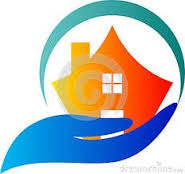The United States faces a fundamental mismatch between surging demand and insufficient capacity.
2026 Physician Fee Schedule, released in July, directs reimbursement toward remote monitoring and value-based care in the home.
Older adults can save tens of thousands of dollars annually by choosing assisted living communities over aging in place in their homes.
Unlike point solutions, Inspiren unifies resident safety, care planning, staffing, and emergency response into a single AI-powered platform.

 Technology access is a vital sign. Non-adoption is not an option. Post Covid-19 we have reached a technology dependency level that is worrisome (see
Technology access is a vital sign. Non-adoption is not an option. Post Covid-19 we have reached a technology dependency level that is worrisome (see  It’s a slog searching for data about tech adoption of older adults. So many years of searching and trying to understand gaps in adoption, less and less usable data. Survey organizations exist that track adoption by age (think Pew Research, Nielsen, AARP) – but the frequency with which they publish surveys about technology has diminished over the years. Checking out the main page of
It’s a slog searching for data about tech adoption of older adults. So many years of searching and trying to understand gaps in adoption, less and less usable data. Survey organizations exist that track adoption by age (think Pew Research, Nielsen, AARP) – but the frequency with which they publish surveys about technology has diminished over the years. Checking out the main page of  Honor buys Home Instead: one of the newest acquires one of the oldest.
Honor buys Home Instead: one of the newest acquires one of the oldest.  Innovation is booming in categories to help older adults. Perhaps it’s not surprising that innovation focused on older adults is ramping up – mitigating issues of social isolation, wander risk and safety, engagement, caregiving, financial management and many other categories. Not only was last year a bad year for
Innovation is booming in categories to help older adults. Perhaps it’s not surprising that innovation focused on older adults is ramping up – mitigating issues of social isolation, wander risk and safety, engagement, caregiving, financial management and many other categories. Not only was last year a bad year for  Nobody wants to live in a nursing home. Yeah, yeah. We get it. The NY Times
Nobody wants to live in a nursing home. Yeah, yeah. We get it. The NY Times